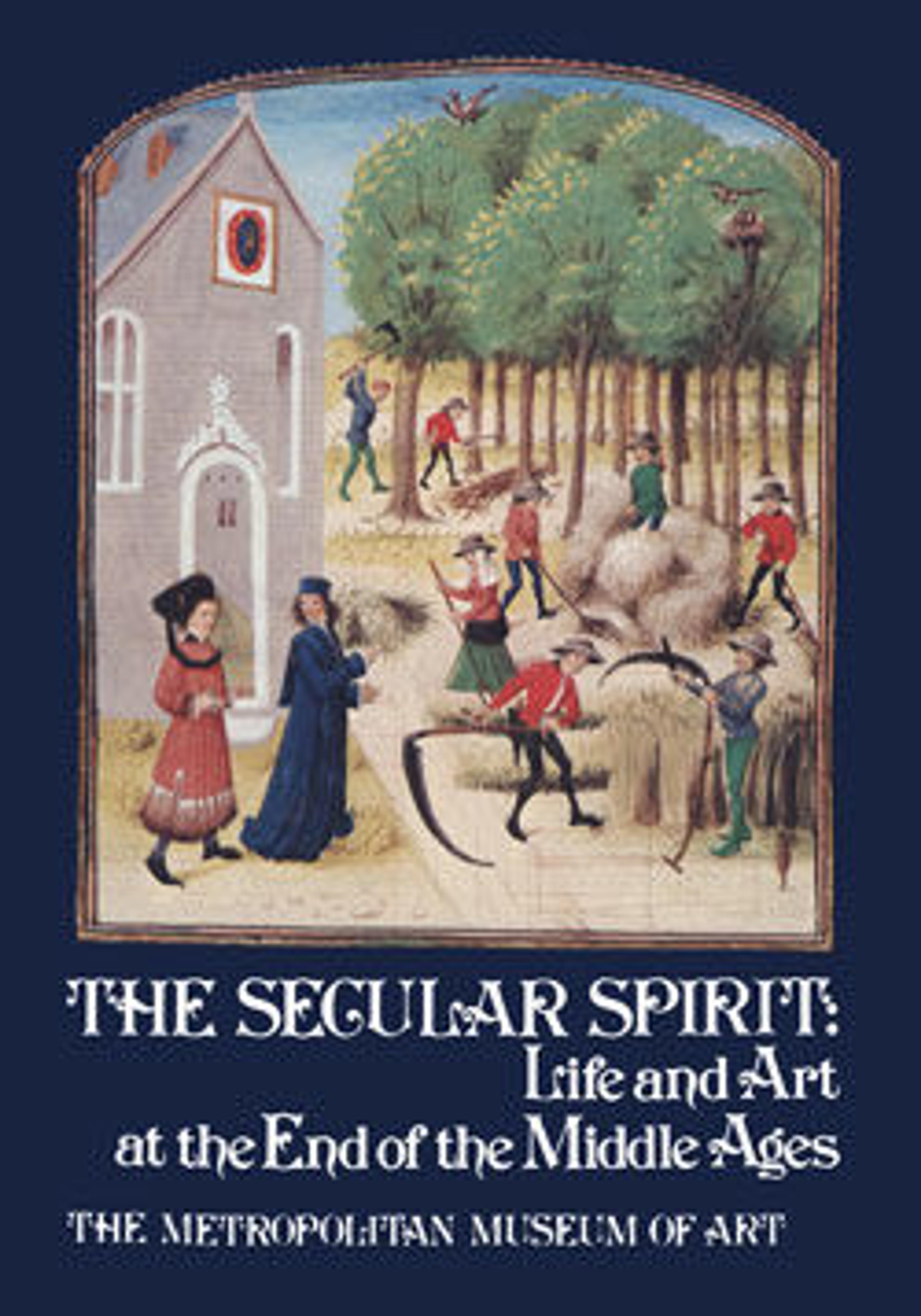Candlestick
Medieval man took advantage of the light of day as much as possible, but, in the early dark of winter, he had to have recourse to other forms of light, most frequently that of the fireplace. In the fourteenth and fifteenth centuries, the smoky torches of resinous wood, which formerly had been used to provide additional light in the rooms of castles, were generally restricted to use at outdoor events. Candles mounted in wall brackets, chandeliers, or candlesticks, and in some cases, oil lamps, were used to light interiors. Common candles made of tallow had wicks that needed constant trimming and burned with an unpleasant smell. The better quality candles, made of beeswax and used with pricket candlesticks, were so expensive that only the wealthy could afford them. Although in the late Middle Ages large pricket candlesticks were more commonly found in the church, were are some representations of them in use of the dinner table or for other domestic purposes.
Artwork Details
- Title:Candlestick
- Date:15th or 16th century
- Geography:Made in Dinant or Lower Rhineland
- Culture:South Netherlandish or German
- Medium:Copper alloy
- Dimensions:Overall: 16 5/8, with pricket 20 5/8 x Diam. of base 7 3/8 in. (42.2 x 18.7 cm)
- Classification:Metalwork-Copper alloy
- Credit Line:The Cloisters Collection, 1955
- Object Number:55.40.1
- Curatorial Department: Medieval Art and The Cloisters
More Artwork
Research Resources
The Met provides unparalleled resources for research and welcomes an international community of students and scholars. The Met's Open Access API is where creators and researchers can connect to the The Met collection. Open Access data and public domain images are available for unrestricted commercial and noncommercial use without permission or fee.
To request images under copyright and other restrictions, please use this Image Request form.
Feedback
We continue to research and examine historical and cultural context for objects in The Met collection. If you have comments or questions about this object record, please contact us using the form below. The Museum looks forward to receiving your comments.
